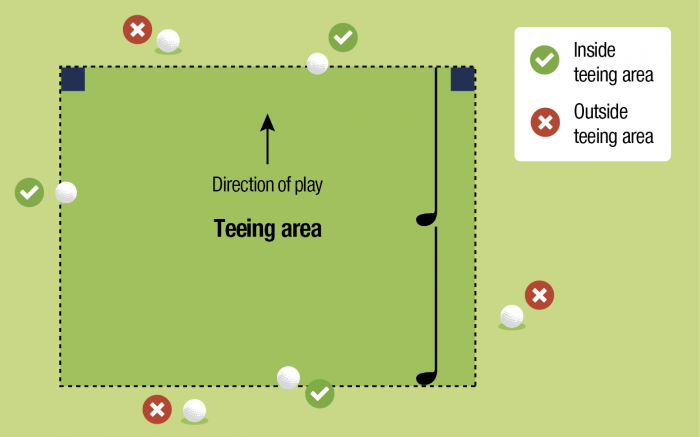The rules of golf: What constitutes a teeing area?
Shona McRae, The R&A’s Assistant Rules Director, details what a teeing area constitutes and advises on the location of tee-markers.
The teeing area is an important area of the golf course – after all, it’s where it all starts. The Rules stipulate that the player must start each hole by playing a ball from anywhere inside the teeing area under Rule 6.2b.
One of the duties of the committee, or a duty that is often passed on to the course maintenance team, is to establish the teeing area for each hole.
The teeing area is defined as a rectangle that is two club-lengths deep where the front edge is defined by the line between the forward-most points of two tee-markers and the side edges are defined by the lines back from the outside points of the tee-markers.

In situating this teeing area, the committee should always attempt to position the tee-markers far enough forward so that players can use the entire two club-lengths permitted. However, this two club-lengths may be restricted at times by overhanging branches or walls that are very close to the ground built for the tee. That said, the aim is to give the golfer as much of the two club-lengths wherever possible, so avoiding such obstacles is recommended.
The width of the teeing area will very much be determined by the width of the ground available for the teeing area. While there are no restrictions on the positioning of the tee-markers and the width they are placed apart, it is good practice to place the two tee-markers approximately six paces from each other. If they are placed too far apart, then this can make it difficult for a player to determine if a ball has been teed within the teeing area.
A player may also stand outside the teeing area in making a stroke at a ball in the teeing area, so leaving a small amount of room either side of the tee-markers on the flat ground is recommended to allow a player to take a stance on the edge of the teeing area – remember both left and right-handed players!
Another negative of placing the tee-markers too far apart is that it can result in divot holes covering a much larger area on par three holes. The scope to move the teeing area to fresh ground that is not damaged is therefore reduced and limits the choice of changing the angle of attack to the green.

Shona McRae
Finally, in terms of the position of the tee-markers in relation to the measured course (also known as the ‘stones’), the Rules of Golf do not determine the position of the tee-markers in relation to the length of the hole and its par. These matters are determined by the handicap system and the requirements for scores for handicap qualifying purposes.
Therefore, if you plan to move a teeing area that would affect the length of the hole significantly, it is worth checking with your national golf union as to the implications for handicapping.
For more information on committee responsibilities, visit the ‘Committee Procedures’ in the Rules of Golf app or at www.randa.org.















Is there a standard for teeing grounds? Or?